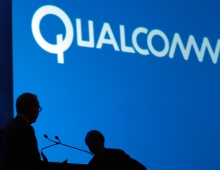
NXP Delivers ULPI Hi-Speed USB transceivers for Mobile Phones
NXP Semiconductors today announced availability of its new generation UTMI+ Low-Pin Interface (ULPI) Hi-Speed USB transceivers, developed specifically for mobile phone designs.
With the smallest transceiver in the family measuring in at 2.2 x 2.25 x 0.6 mm, in a 0.4 mm ball pitch, NXPs transceiver solutions are the smallest in the market and address the specific needs of todays ultra-slim handset designs. In addition, as the actual USB usage in mobile phones is low compared to overall talk and standby time, NXPs transceivers avoid battery drain by consuming only 0.5 ΅A in power-down mode.
NXPs family of new generation ULPI Hi-Speed USB transceivers contains four members ISP1504x1, ISP1508, ISP1702 and ISP1703, all of which are fully compliant with industry specifications, including ULPI Rev. 1.1, USB On-The-Go (OTG) Rev. 1.2 and USB Rev. 2.0. Catering to the special needs of mobile phones, all transceivers support a mobile phones wider range of input supply voltage of 3.0 V to 4.5 V. A new power-down mode conserves battery with an ultra low-power consumption of less than 0.5 ΅A when the USB transceiver is not in use.
This initial range of second-generation ULPI transceivers have host, peripheral and OTG functions. ISP1508, ISP1702 and ISP1703 address lower system voltage levels with their VCC(I/O) of 1.4 V to 1.95 V, and some can be pin-selected to be in single data rate (SDR) or double data rate (DDR) interface operation. Additionally, all three parts can support USB charger detection, and external charge pump for OTG function.
The ULPI transceiver interface, upon which NXPs second-generation ULPI Hi-Speed USB transceivers are based, was developed by an industry consortium to allow chips and systems designers to connect a Hi-Speed USB transceiver to USB core logic embedded in application-specific integrated circuits (ASICs) and systems-on-chip (SoCs). By using the ULPI standard interface instead of proprietary interfaces, ASIC and SoC designers can reduce design time, simplify testing and ensure interoperability with USB transceivers.
NXPs ISP504x1, ISP1508 and ISP1702 devices are sampling now, with the first two products in mass production in March and April respectively.
NXPs family of new generation ULPI Hi-Speed USB transceivers contains four members ISP1504x1, ISP1508, ISP1702 and ISP1703, all of which are fully compliant with industry specifications, including ULPI Rev. 1.1, USB On-The-Go (OTG) Rev. 1.2 and USB Rev. 2.0. Catering to the special needs of mobile phones, all transceivers support a mobile phones wider range of input supply voltage of 3.0 V to 4.5 V. A new power-down mode conserves battery with an ultra low-power consumption of less than 0.5 ΅A when the USB transceiver is not in use.
This initial range of second-generation ULPI transceivers have host, peripheral and OTG functions. ISP1508, ISP1702 and ISP1703 address lower system voltage levels with their VCC(I/O) of 1.4 V to 1.95 V, and some can be pin-selected to be in single data rate (SDR) or double data rate (DDR) interface operation. Additionally, all three parts can support USB charger detection, and external charge pump for OTG function.
The ULPI transceiver interface, upon which NXPs second-generation ULPI Hi-Speed USB transceivers are based, was developed by an industry consortium to allow chips and systems designers to connect a Hi-Speed USB transceiver to USB core logic embedded in application-specific integrated circuits (ASICs) and systems-on-chip (SoCs). By using the ULPI standard interface instead of proprietary interfaces, ASIC and SoC designers can reduce design time, simplify testing and ensure interoperability with USB transceivers.
NXPs ISP504x1, ISP1508 and ISP1702 devices are sampling now, with the first two products in mass production in March and April respectively.




















